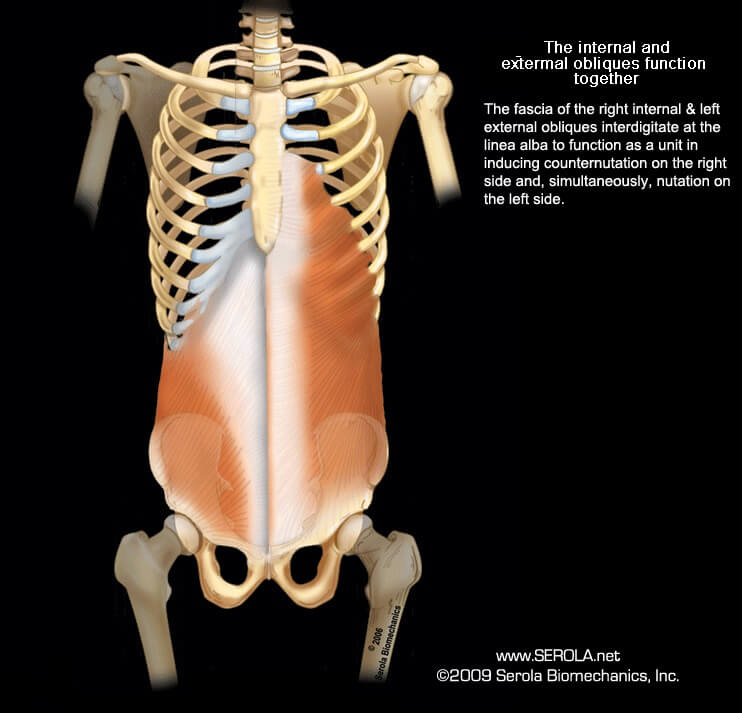Internal – External Obliques Muscle Sling

The fascia of the right internal and left external obliques interdigitate at the linea alba to form a force couple that induces counternutation on the side of the internal oblique and nutation on the side of the external oblique.
In a normal movement pattern, the body reciprocates left to right evenly, with nutation occurring on the side of weight bearing (stance phase) and counternutation occurring on the side of leg flexion (swing phase). Muscular patterns reflect this reciprocal relationship, as evidenced in Gracovetsky’s[1] analysis of muscular patterns in shoulder rotation during gait.
Gracovetsky found that when the right leg is in extension (stance phase – right nutation – pelvis rotating to the right), the right shoulder would rotate to the left and the muscle patterns are:
– Contracted left: trapezius, posterior deltoid, latissimus dorsi.
– Inhibited left: gluteus maximus, pectoralis major, anterior deltoid, anterior serratus.
– Contracted right: gluteus maximus, pectoralis major, anterior deltoid, anterior serratus.
– Inhibited right: trapezius posterior deltoid and latissimus dorsi.
In coordination with the above pattern, the right internal oblique and left external oblique pull the left rib cage inferiorly and anteriorly, causing right rotation coupled with right lateral flexion (counternutation).
References:
1. Gracovetsky, S. and H. Farfan, The optimum spine. Spine, 1984. 11(6): p. 543-73.

